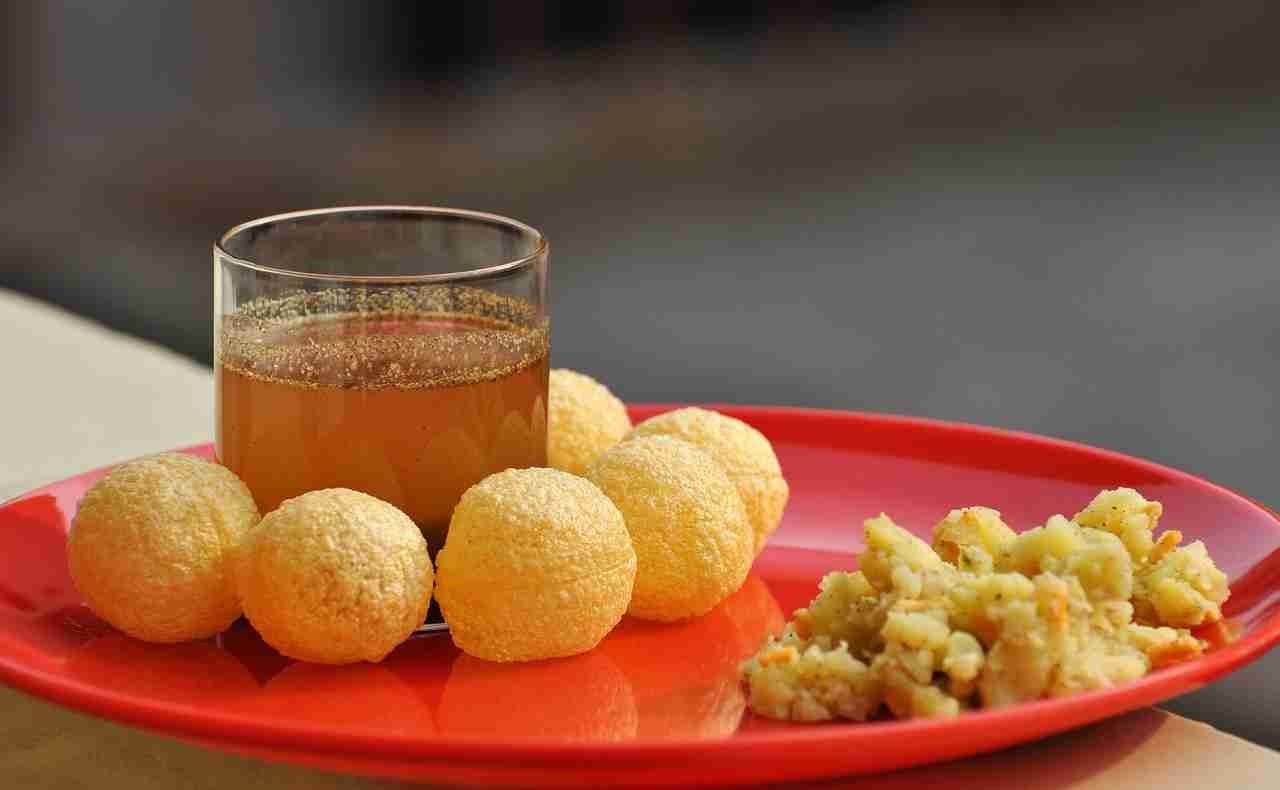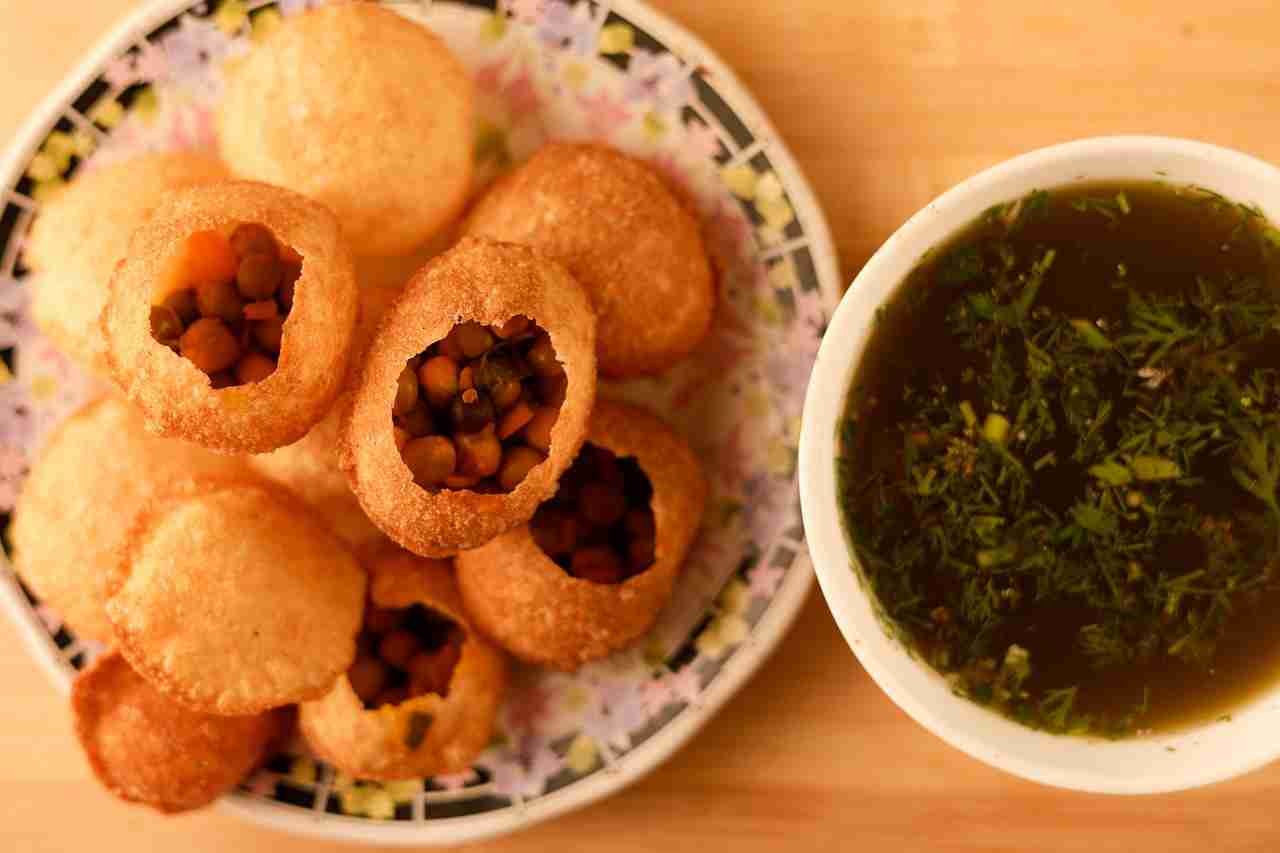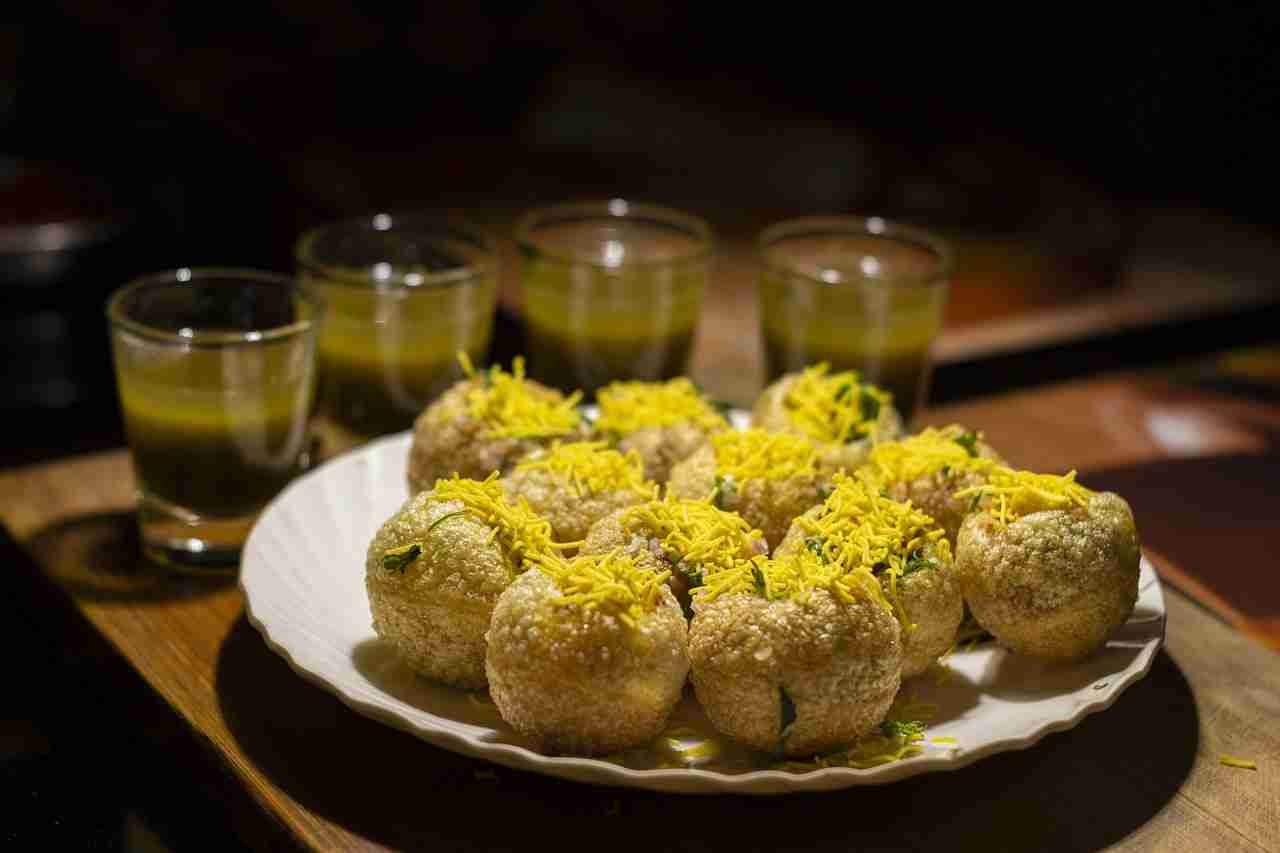Panipuri, a name that resonates with the symphony of taste, culture, and tradition in the Indian subcontinent, is not just a snack.
It is an experience.
This beloved street food, also known as golgappa, puchka, or a myriad of other regional names, encapsulates the essence of Indian culinary diversity.
Let’s embark on a flavorful journey through its origin, history and cultural significance, culminating in a recipe that you can recreate at home.
Origin
The story of panipuri begins in the ancient kingdom of Magadha, present-day Bihar, where it first emerged around 500 BC.
Initially called ‘phulki,’ which means ‘crisp,’ it has evolved into the iconic dish we know today.
Culinary anthropologist Kurush Dalal suggests that chaat, the category of Indian street food to which panipuri belongs, originated in North India, possibly as a smaller version of the ‘Raj Kachori’.
Panipuri through the ages
As people migrated across the Indian subcontinent, panipuri spread its flavors from one region to another.
On March 10, 2005, the word ‘panipuri’ was officially added to the Oxford English Dictionary, marking its global linguistic recognition.
The snack’s evolution over time has seen various regional adaptations, with the filling and flavored water reflecting local preferences and ingredient availability.

Cultural significance and regional variations
Panipuri holds a special place in the hearts of millions, often being an integral part of festivals, celebrations and daily life.
Each region in India offers its unique twist to panipuri, from the spicy tamarind water in the north to the tangy and sweet flavors in the west.
In Kolkata, ‘phuchka’ uses a mix of tamarind and spicy water, while in Mumbai, ‘pani puri’ is enjoyed with a sweeter chutney.
The art of making panipuri
The preparation of panipuri is almost ritualistic.
The hollow puris are filled with a mixture of flavored water, tamarind chutney, chickpeas, and potatoes. The ‘pani’ or flavored water is the soul of the dish, often infused with mint, tamarind, or jaggery to create a burst of flavors.
A culinary icon
Panipuri isn’t just food; it is a culinary icon that brings people together, transcending social and economic barriers.
It is a common sight to see individuals from all walks of life standing by a panipuri vendor, waiting for their turn to savor this delightful snack.

A recipe to savor
To end our journey, let’s look at a simple panipuri recipe that you can try at home.
This recipe will guide you through creating the crispy puris and the tantalizingly flavored water that makes panipuri a nationwide sensation.
INGREDIENTS
For the puris:
- 1 cup semolina (rava/suji)
- 2 tablespoons plain flour (maida)
- 3 tablespoons oil
- ¼ cup hot water
- oil for frying
For the pani spicy mint water:
- ½ cup mint leaves
- ½ cup coriander leaves
- 2 green chilies
- ½ inch ginger
- 1 ½ medium-sized lemons
- 3 tablespoons sugar
- 1 ¼ teaspoons chaat masala
- ¼ teaspoon black salt (kala namak)
- 4 cups water
For the filling:
- 1 ½ cups boiled, peeled, and mashed potatoes
- ½ cup boiled chickpeas (kala chana)
- ½ teaspoon red chili powder
- ½ teaspoon cumin-coriander powder
- salt
Instructions
- Begin by making the puris. Mix semolina, plain flour, oil, and hot water to form a dough. Let it rest for 30 minutes, then roll out small circles and deep fry until they puff up and turn golden brown.
- For the spicy mint water, blend mint leaves, coriander leaves, green chilies, ginger, lemon juice, sugar, chaat masala, and black salt with water until smooth. Strain and chill in the refrigerator.
- Prepare the filling by mixing mashed potatoes, chickpeas, red chili powder, cumin-coriander powder, and salt.
- To assemble, crack a small hole on top of each puri, fill with the potato-chickpea mixture, and dip into the spicy mint water.
- Serve immediately and enjoy the explosion of flavors!
Regional variations
The regional variations of panipuri reflect the rich tapestry of India’s diverse culinary landscape.
Each region adds its unique flavor, creating a distinct version of this beloved snack that resonates with local tastes and traditions.
In Maharashtra, particularly in Mumbai, panipuri is known for its hot ragda—a thick white peas curry—paired with tangy green and sweet tamarind chutney. The puris here are often filled with a spicy potato mixture, offering a burst of flavors with every bite.
Moving to the eastern parts of India, such as West Bengal and Assam, panipuri transforms into ‘puchka’ or ‘phuchka.’ This variant is famous for its mix of boiled gram and mashed potatoes as filling, and the chutney is more tangy than sweet. The puris are larger and darker, and the vendors in Kolkata are known for customizing the flavors of the mashed potato to suit individual preferences.

In the northern states like New Delhi and Punjab, panipuri is commonly referred to as ‘gol gappe.’
The filling is similar to its Bengali counterpart, but the flavored water usually contains a dash of mint and is notably spicier. The puris are made from a combination of flour and semolina, giving them a distinctive texture.
Gujarat offers its version called ‘pakodi,’ not to be confused with the fried snack ‘pakodas.’ In this variation, panipuri is enjoyed with sev, and the sweet chutney is often omitted, while onions are included. The flavored water is heavy on mint and green chilies, making for a spicier experience.
In Haryana, the snack is known as ‘paani ke patashe,’ and in Rajasthan, it goes by ‘patashi.’ The taste is quite similar to that of gol gappe, but the water for patashi is typically made from dry mangoes, adding a unique tangy flavor.
Lastly, in Uttar Pradesh, panipuri is called ‘paani ke batashe.’ The water is rich with spices and flavors, and the filling used is mostly mashed potatoes along with chickpea or gram, creating a delightful combination of textures and tastes.
These regional variations not only showcase the versatility of panipuri but also highlight the creativity and adaptability of Indian street food. Each version of panipuri carries the essence of the region it represents, making it a true culinary mosaic of India.
Whether it is the spicy tang of gol gappe or the tangy zest of puchka, panipuri continues to be a snack that unites people in their love for flavor and tradition.
Conclusion
Panipuri’s journey from the ancient streets of Magadha to the bustling lanes of modern cities is a story of culinary evolution and cultural integration.
It is a snack that has stood the test of time, adapting and thriving with each passing century. As you relish the flavors of panipuri, you partake in a legacy that is quintessentially Indian, a legacy that continues to evolve and enchant with its timeless appeal.
Panipuri is more than just a snack; it is a testament to India’s rich culinary heritage. Whether you are a seasoned foodie or new to Indian cuisine, panipuri is a dish that promises a sensory overload with every bite.
The next time you bite into a panipuri, remember the centuries of history and culture that have shaped this humble yet extraordinary snack.